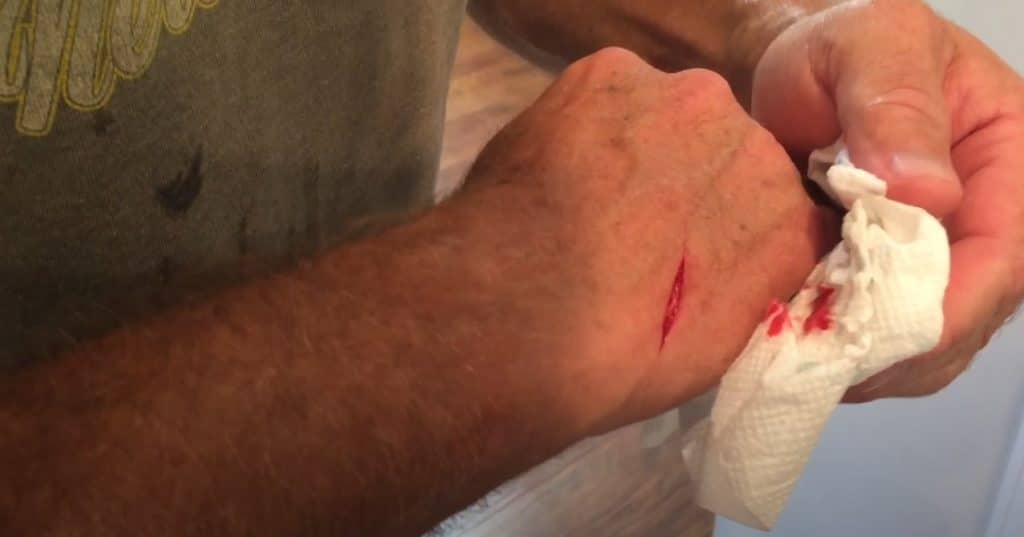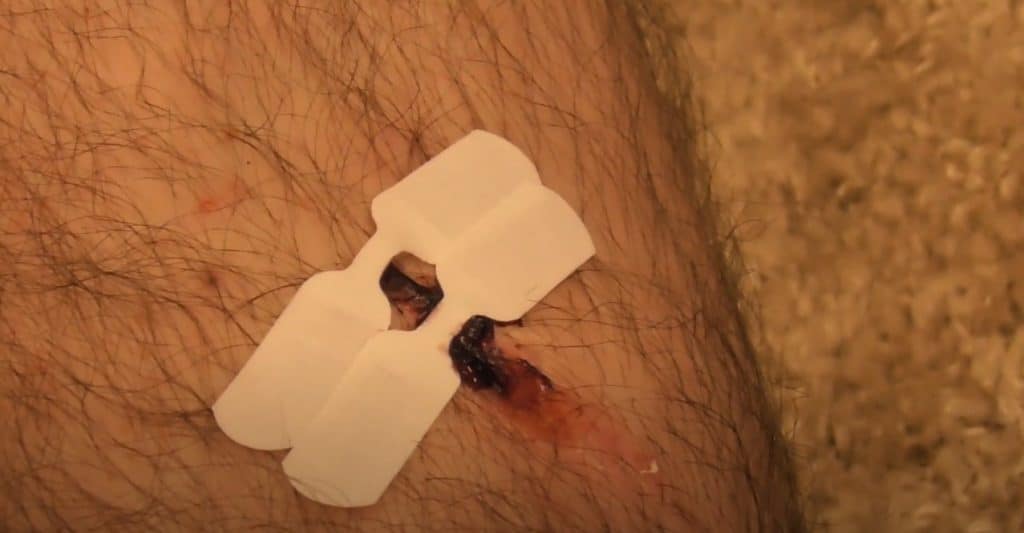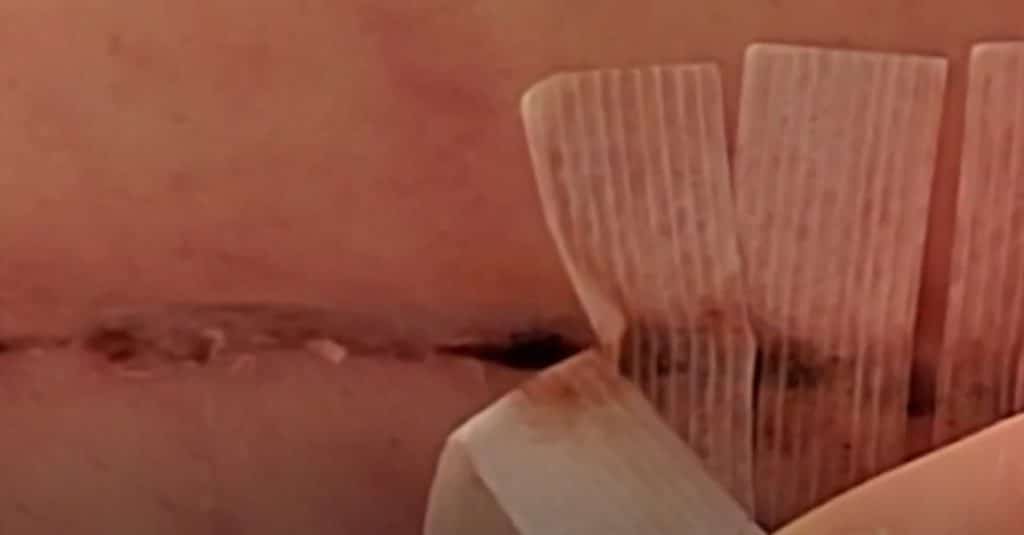Butterfly stitches are a tool that is often used in emergency medicine, in 2023, are a tool often used for wound care. This is something similar to a patch that allows you to keep the wound closed. It is also called steri strips. Butterfly stitches are usually used for serious deep wounds when it is impossible to turn to a professional to apply sutures. In addition, they should be superimposed when the bleeding can be stopped.
Continue reading this article to learn about the rules for applying and removing butterfly bandages, as well as to get answers to the most popular questions about this method of wound healing.
Types of Wounds Butterfly Stitches Are Suitable For

So you are in a situation where you urgently need to take some emergency medicine actions. How can you tell if a butterfly stitch is suitable for your wound? Several conditions must be met:
- The size of the wound is not more than half an inch;
- The wound edges should be straight;
- The wound is not very deep.
Another important thing you should remember is the cleanliness of the wound. Butterfly stitches can be applied exclusively to the clean edges of the cut. There should be no blood on the skin around the wound. If you cannot stop the bleeding by applying pressure yourself, then be sure to contact a doctor who can provide proper treatment.
Thus, butterfly stitches will be perfect when you need to make a quick health decision and take care of shallow cuts.
Cases When Butterfly Stitches Are Insufficient
However, there are many cases when a butterfly bandage is not the right solution in emergency medicine. In the following cases, clinical procedures are necessary:
- The wound appeared as a result of an animal attack. In this case, a rabies injection is necessary;
- Even if you apply pressure to the wound site with a clean cloth, the bleeding does not stop for several minutes;
- The wound is larger than the dimensions mentioned above;
- You cut yourself on a rusty object. In this case, tetanus vaccination is necessary.
Which health decision can be made instead? Well, the main thing you should do is to see a doctor. It is advisable to visit the hospital so that you can receive proper care in sterile conditions. There is more than one bandage out there, such as a liquid bandage with which you can protect the wound.
Butterfly Stitches Usage Timing

The average period that is recommended for wearing butterfly stitch is 12 days. However, this period may vary depending on the doctor’s recommendation. However, this does not mean that you should not monitor the wound throughout this period.
Here are a few things you should watch out for:
- Redness;
- Painful sensations in the cut area;
- The appearance of pus;
- The wound is swollen.
If you notice anything from the list above, urgently go to the hospital where you can be given proper care.
In addition, keep in mind that it is not recommended to wet the place of the bandage during the first two days. After that, you can wet the wound site, but do not forget to gently but thoroughly wipe the skin with a towel to remove all moisture.
Butterfly Bandages Application

- Rinse the wound with cool and clean water. Wash the skin around the wound with soap, but do not allow soapy water to get into the wound itself. Blot the wound site and the surrounded skin. The adhesive tape is fixed much better on clean and dry skin;
- Pull and hold the skin near the wound to connect the wound edges and make the wound less open;
- Apply one sticky end tightly on one side and the other sticky end on the other side of the wound. Attach not lengthwise but across the wound. To make the part that will touch the wound non-sticky, fold the long side of the tape in half with the sticky side out, cut out the recesses near the fold and fold these notched pieces together;
- If the wound is quite large, then more than one bandage may be needed. The main thing is to fix the tape tightly so that it lasts more than 10 days.
Butterfly Stitches Removal

Now you know everything about the butterfly bandage: the features of these stitches, the rules for applying and removing bandages. However, remember that you cannot make a diagnosis relying solely on this article. If you have doubts, be sure to seek professional help. If you are afraid of being in an emergency when it will be impossible to get to the hospital, then print out the instruction sheet in advance and have it with you.
Frequently Asked Questions — FAQ
What are Butterfly Stitches?
Butterfly stitches are one of the types of bandage that is generally quite easy to apply and is designed for not too deep and dangerous wounds. Therefore, this type of bandage is often used for family medicine, current urgent wounds, and emergency medicine.
How to Apply a Butterfly Bandage?
Try to pull and connect the edges of the wound. You have to attach the long side of the tape across the cut. To do this, attach one sticky end tightly to one side to the left and the other sticky end to the right. You can also fold the notched pieces of the tape together to make a non-sticky part that will touch the wound.
How to Assess a Wound?
A butterfly bandage is an emergency medicine tool, so it is suitable for not very deep wounds. Moreover, the edges should be straight. Otherwise, consult a doctor for advice.
How Long to Keep the Butterfly Stitches On?
A butterfly bandage needs to be worn for almost two weeks. By this time, the adhesive tape may fall off by itself, do not worry, the cut has already healed. However, you need to choose a sticky and tightly holding tape so that it does not fall off in advance.
When to Use Butterfly Stitches?
This type of bandage is suitable for emergency medicine actions. If the wound is shallow and you are not in danger of rabies or tetanus, then butterfly stitches are suitable for your case.
How to Care For Butterfly Stitches?
This type of bandage does not need special medical attention, the incision care is very simple. Just keep an eye on the wound so that it does not get worse and do not wet the bandage for the first two days. If everything is in order, additional treatment will not be needed.
How to Remove Butterfly Stitches?
Wet the bandage with an aqueous solution and gently begin to detach the adhesive tape from the skin. The main thing is not to pull abruptly, as this can lead to skin damage.


